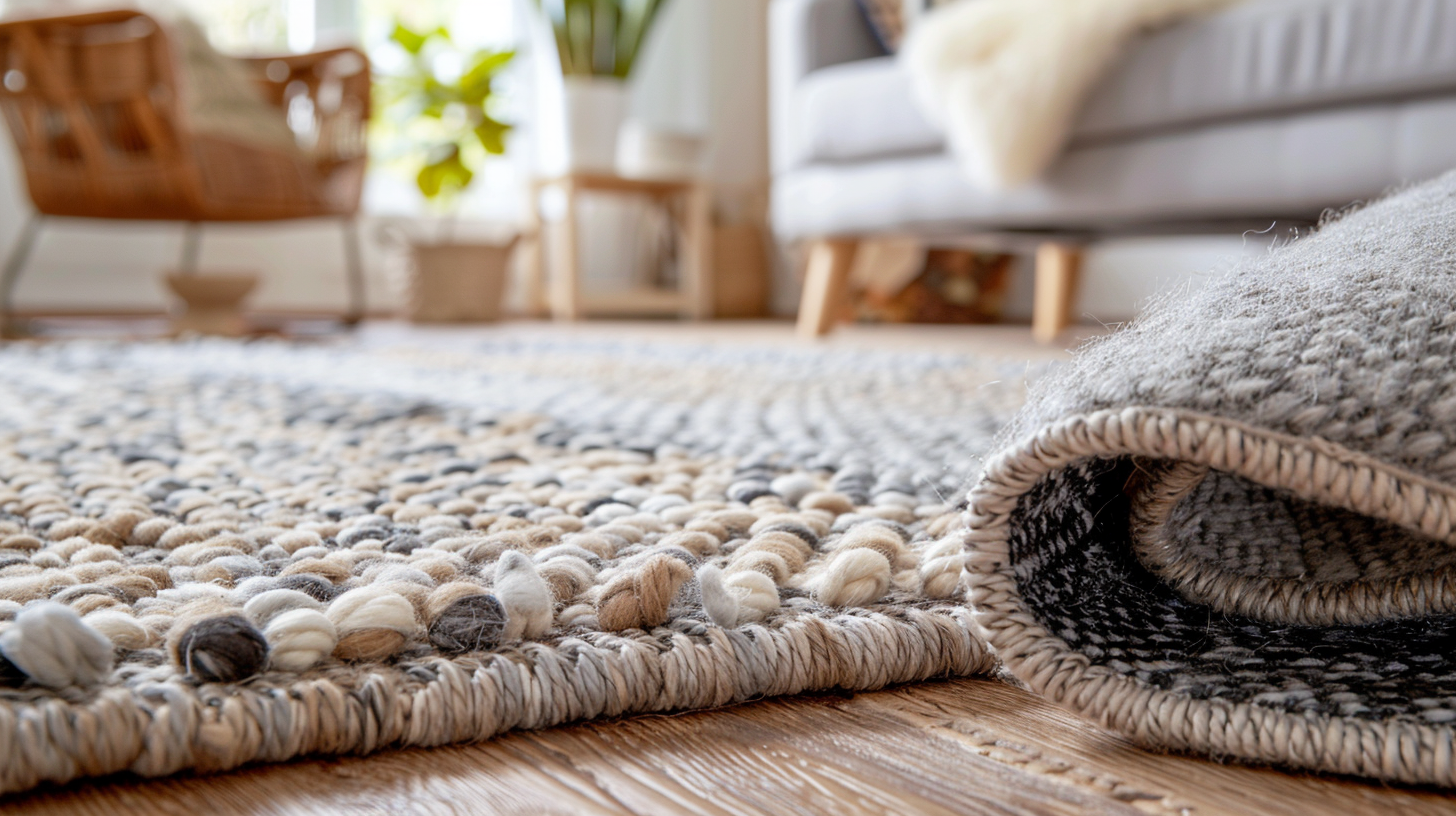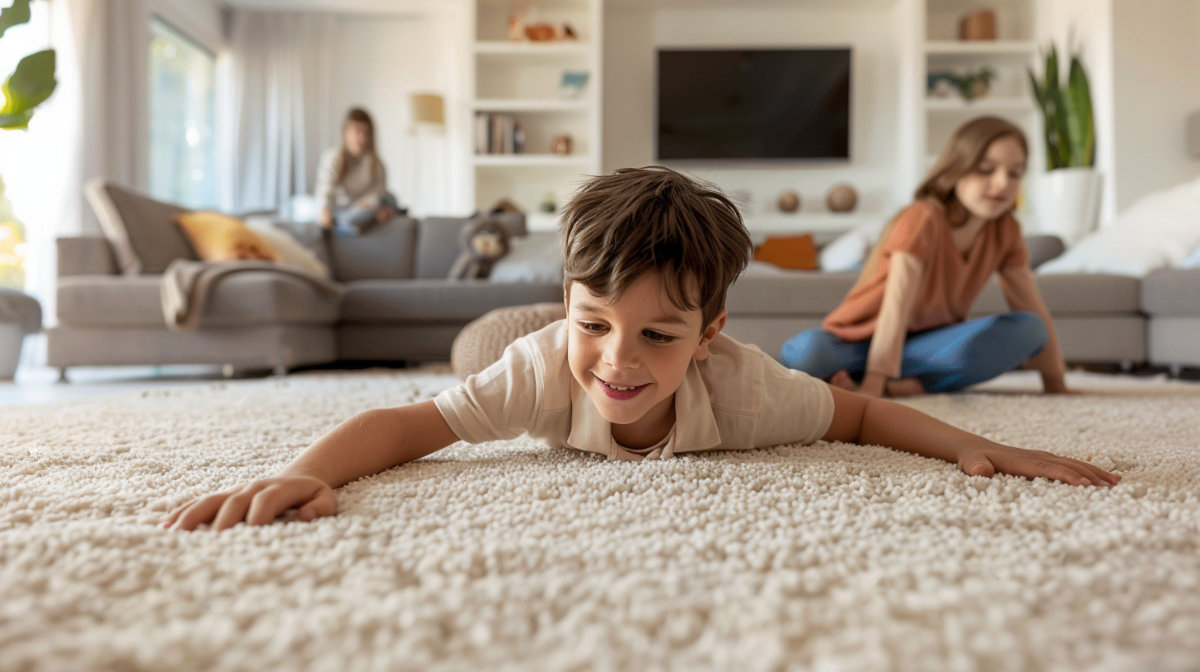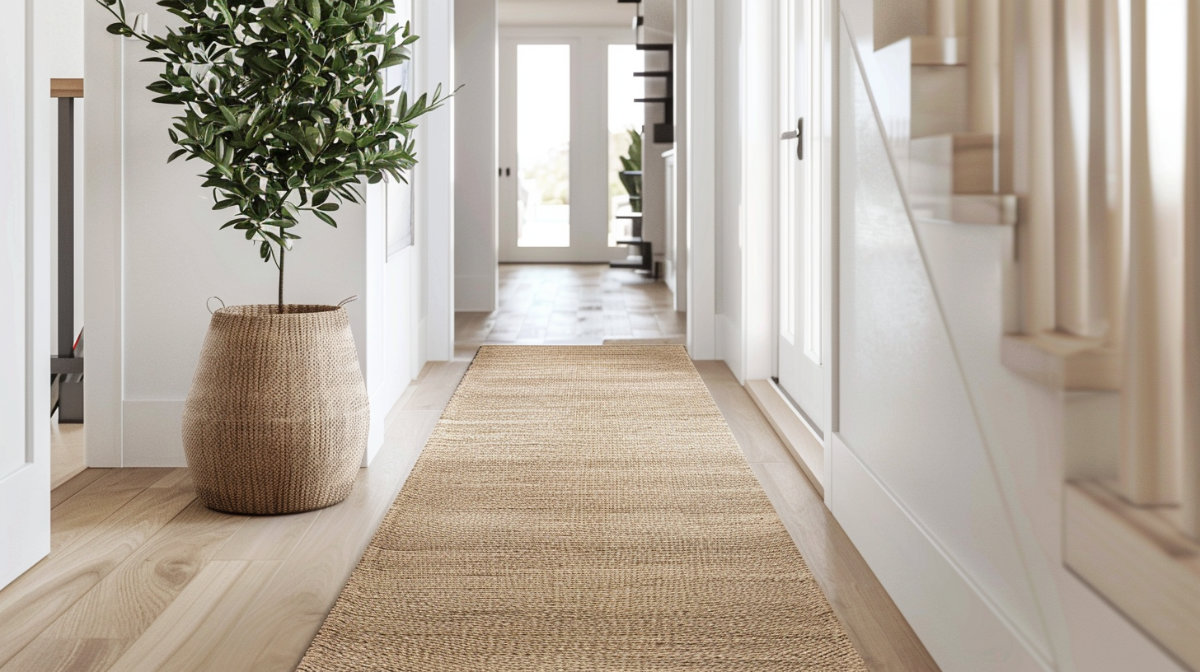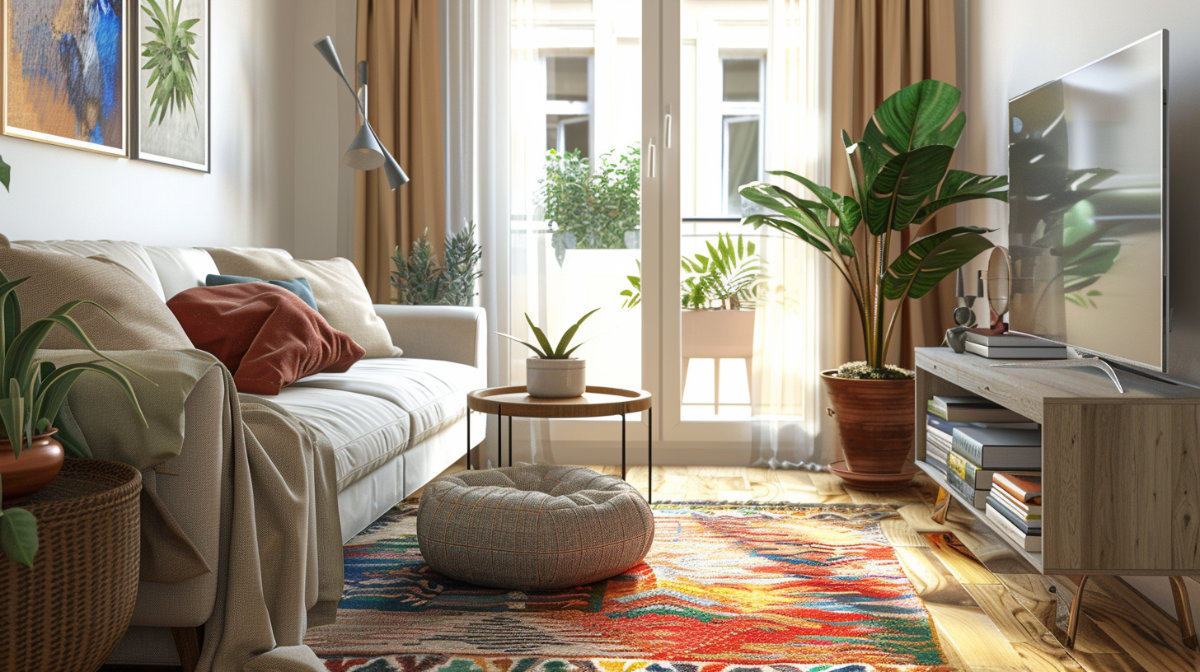Why Soundproofing Matters in Modern Homes
Let me ask you something—have you ever been woken up at night by the sound of heavy footsteps or a blaring TV from the room next door? Perhaps the constant clatter of your kids running down the hallway drives you to seek a little peace and quiet. If this sounds familiar, you’re not alone. In a world where urban living and busy family homes are the norm, soundproofing has become less of a luxury and more of a necessity.

With over 40 years in the carpet industry, I’ve witnessed the profound difference the right carpet can make in creating a peaceful home environment. I’ve had numerous conversations with families struggling with noisy homes – from loud upstairs neighbours to the echoing thud of running children – and carpets have consistently provided relief. Carpets, the unsung heroes of home soundproofing, act like a soft blanket, muffling the sharp edges of sound and creating a quieter, more comfortable living space. They bring a sense of reassurance and comfort, transforming a noisy home into a peaceful sanctuary.
In this blog, we’ll delve into the practicality of soundproofing your home with carpets, offering solutions for homeowners and renters alike. We’ll explore the types of carpets that work best for noise reduction, where to place them for maximum effect, and how you can make the most of your investment to create a calm, quiet sanctuary. By providing these practical solutions, we aim to empower you, the reader, to take control of your living environment and enjoy a quieter, more peaceful home.
How Carpets Help with Soundproofing
When you think of soundproofing, you might jump to foam panels or heavy drapes, but carpets are often overlooked. The truth is, carpets work wonders for soundproofing, and here’s why: imagine walking through an empty house with hard flooring – your footsteps echo off the walls, each step creating a sharp, reverberating noise. Now, picture laying a thick, plush carpet across the same floor. Suddenly, everything feels softer and quieter, like the room is wrapped in a silky cocoon.
The fibres in carpets act like tiny, sound-absorbing sponges. Whether it’s airborne noise – such as conversations or the TV – or impact noise – like footsteps and dropped items – the carpet’s structure helps trap and diffuse these sounds. This is especially important in busy family homes where kids constantly move or in apartments where noise from above or next door can disrupt your peace.
In my years of experience, I’ve often likened carpets to a shock absorber. Just as a car’s suspension system softens the impact of a bumpy road, a carpet softens the noise that bounces off hard surfaces, calming the chaos of a noisy household. The thicker the carpet, the better it works at this. But it’s not just about thickness – the type of fibres and the underlay beneath the carpet play significant roles, too. We’ll get into that shortly but know that the right carpet can transform your home from a noisy echo chamber into a peaceful retreat.
Best Carpet Types for Soundproofing
Not all carpets are created equal, especially when it comes to soundproofing. Over the years, we have helped many homeowners choose carpets based on more than just their looks – sound absorption is a significant factor, especially in homes with young kids or those living in apartments. So, how do you know which carpet is suitable for the job?

First, let’s talk about materials. Wool carpets, for example, are like the gold standard for noise reduction. Wool is naturally dense and fibrous, making it highly effective at absorbing sound. It’s like the quiet hero in your living room, silently dampening noise while adding warmth and luxury. We’ve had families with boisterous kids thank me profusely after swapping their hard flooring for wool carpets, remarking how quiet the house feels. It’s also worth noting that wool is a sustainable and biodegradable material, making it an environmentally friendly choice for your home.
If wool is outside your budget, don’t worry. Synthetic fibres like nylon and polyester are also excellent choices for soundproofing. Nylon, in particular, is known for its durability and versatility. It may not have the same natural texture as wool, but it holds well under high foot traffic, making it a good option for hallways, stairs, and living rooms. Think of it as the workhorse of carpets – dependable, hard-wearing, and pretty good at keeping the noise down too. This versatility ensures that there are soundproofing options for every budget, making homeowners and renters feel that they have a range of choices to suit their needs.
Another key factor to consider is carpet thickness. A thicker pile will naturally absorb more sound because it has more material to trap the noise. In this sense, your carpet acts like a sponge – the more profound and denser the fibres, the better it soaks up sound. I usually recommend a thicker pile carpet for areas where noise is a particular issue, like upstairs bedrooms or living rooms where the TV is often on.
However, carpet alone can’t do all the heavy lifting – the underlay beneath the carpet is just as important. A suitable quality underlay acts as a second layer of soundproofing, absorbing impact noise before it even reaches the carpet. It’s like adding a cushioned buffer between your floor and the world beneath. I’ve often told customers that investing in a suitable underlay is like putting the cherry on top of their soundproofing efforts – it really makes a noticeable difference.
Proper maintenance and cleaning of your soundproofing carpets are essential to ensure their long-term effectiveness. Regular vacuuming and occasional professional cleaning can help maintain the sound-absorbing properties of your carpets. Where to Install for Maximum Noise Reduction

Now that we’ve covered the best carpet types, let’s discuss where to place them to maximise their soundproofing potential. Strategic placement is key—consider carpets your home’s silent protectors stationed in the noisiest areas to keep things calm and peaceful.
One of the biggest mistakes I see is homeowners underestimating the noise that travels through high-traffic areas like hallways and staircases. These areas are like highways in your home – constant movement means constant noise. Carpets in these spaces are a game-changer. Imagine the difference a thick, cushioned carpet can make when walking down the stairs early in the morning or when the kids run back and forth during their games. Instead of sharp, clattering footsteps, you get a soft, muted sound, like the fibres have swallowed up the noise.
Then, there are the bedrooms. Bedtime can be noisy for many families, especially those with young children. I always recommend installing carpets in upstairs bedrooms to help contain the noise of bedtime routines or early-morning risers. Carpets don’t just absorb sound their room in – they also reduce the amount of noise that travels to the room below. In fact, a customer told me that after installing carpets in their kids’ rooms, the thuds of little feet on the floor in the early mornings were a thing of the past. The peace and quiet were instant.
In apartments, the importance of carpet placement is even more pronounced. For those living in shared buildings, carpets can act as a buffer between you and your neighbours – not only reducing the sound you hear from above or next door but also helping to keep your household noises to a minimum. Areas like living rooms and communal spaces benefit massively from carpets, especially if you live in a multi-storey building where noise can easily travel between floors. Your neighbours will thank you!
Finally, remember multi-purpose rooms. Open-plan living areas, which are becoming increasingly popular in modern homes, can create a bit of an acoustic nightmare. Without walls to break up the sound, noise tends to bounce around the room, creating an echo effect. Placing a large, thick carpet in the centre of the room—or better yet, in multiple zones—can help absorb much of that sound, making the space feel quieter and more comfortable.
The right carpet in the right place can transform a noisy home into a haven of peace. Focusing on high-traffic areas, upstairs bedrooms, and shared living space can significantly reduce household noise.
Practical Soundproofing Tips for Renters
Living in an apartment often means dealing with noise, whether it’s your neighbour’s late-night TV or footsteps from above. Luckily, there’s a simple, non-permanent solution: rugs.

Large area rugs, especially thick and plush ones, are a great way for renters to reduce noise. They absorb sound within the room and help minimise noise travelling to your downstairs neighbours. I once had a client who placed a thick rug in their living room, and they immediately noticed a quieter atmosphere with fewer complaints from neighbours.
Pairing your rug with a quality pad or soundproof underlay can further reduce noise. These pads act like shock absorbers, softening impact noise and preventing sound from bouncing around.
Strategically placing rugs in high-traffic areas creates a peaceful living space without permanently changing your apartment.
Enjoy a Quieter Home with Soundproof Carpeting
By now, you’ve seen just how powerful carpets can be in creating a quieter, more comfortable living space. From reducing the noise of daily life in busy family homes to helping apartment dwellers enjoy more peace, carpets are an effective, versatile, and often overlooked soundproofing solution.
Whether you choose thick wool for ultimate luxury and noise absorption or eco-friendly materials that help both your home and the planet, carpets can transform your living environment. By placing them in high-traffic areas, bedrooms, and other noise-prone spaces, you’ll immediately notice the difference in sound levels and in your overall sense of calm.
If you’re ready to make your home quieter, take the next step and explore the carpet options available at Jagers Carpets. Our range has something for every home, style, and budget, and our expert team is here to help you find the perfect solution for your soundproofing needs.
